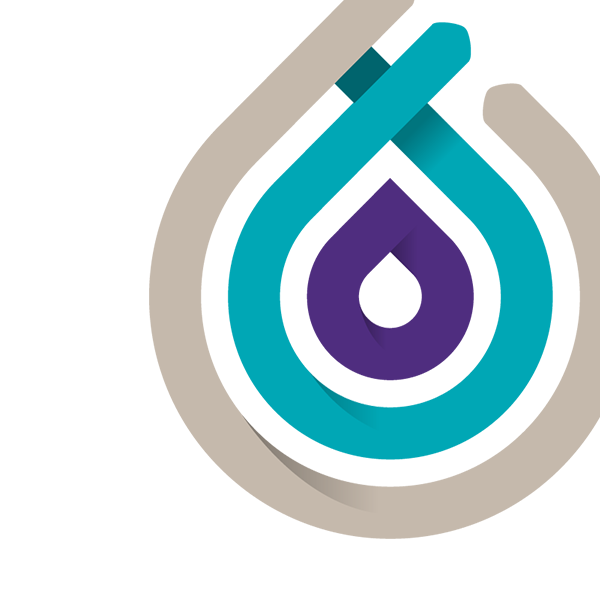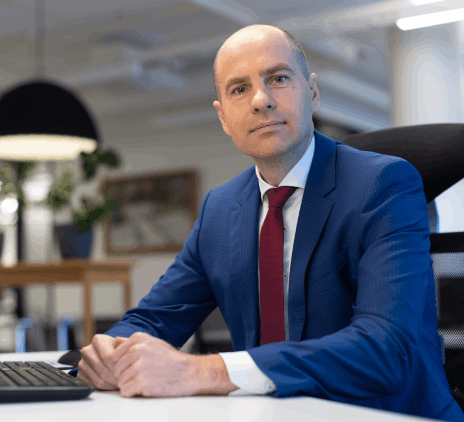-
Other audit services
We help clients with the application and use of foreign financial aid of EU and other funds and help prepare financial reports.
-
Audit calculator
The calculator will answer if the company's sales revenue, assets or number of employees exceed the limit of an inspection or audit.
-
Payroll and related services
We perform payroll accounting for companies whether they employ a few or hundreds of employees.
-
Tax accounting
Grant Thornton Baltic's experienced tax specialists support accountants and offer reasonable and practical solutions.
-
Reporting
We prepare annual reports in a timely manner. We help to prepare management reports and various mandatory reports.
-
Consolidation of financial statements
Our experienced accountants and advisors help you prepare consolidation tables and make the consolidation process more efficient.
-
Consultancy and temporary staff
Our experienced specialists advise on more complex accounting transactions, rectify poor historic accounting, and offer the temporary replacement of an accountant.
-
Outsourced CFO service
Our CFO service is suitable for companies of all sizes and in all industries. We offer services to our clients in the required amount and competences.
-
Assessment of accounting processes
We help companies to implement accounting practices that are in compliance with local and international standards.
-
Accounting services for small businesses
We offer affordable service for small businesses. We help organize processes as smartly and cost-effectively as possible.
-
Cryptocurrency accounting
We keep up with blockchain technology to serve and advise crypto companies. We are supported by a network of colleagues in 130 countries.
-
Trainings and seminars
Our accountants have experience in all matters related to accounting and reporting. We offer our clients professional training according to their needs.

-
Business advisory
We offer legal support to both start-ups and expanding companies, making sure that all legal steps are well thought out in detail.
-
Fintech advisory
Our specialists advise payment institutions, virtual currency service providers and financial institutions.
-
Corporate advisory
We advise on legal, tax and financial matters necessary for better management of the company's legal or organizational structure.
-
Transaction advisory
We provide advice in all aspects of the transaction process.
-
Legal due diligence
We thoroughly analyze the internal documents, legal relations, and business compliance of the company to be merged or acquired.
-
In-house lawyer service
The service is intended for entrepreneurs who are looking for a reliable partner to solve the company's day-to-day legal issues.
-
The contact person service
We offer a contact person service to Estonian companies with a board located abroad.
-
Training
We organize both public trainings and tailor made trainings ordered by clients on current legal and tax issues.
-
Whistleblower channel
At Grant Thornton Baltic, we believe that a well-designed and effective reporting channel is an efficient way of achieving trustworthiness.

-
Business model or strategy renewal
In order to be successful, every company, regardless of the size of the organization, must have a clear strategy, ie know where the whole team is heading.
-
Marketing and brand strategy; creation and updating of the client management system
We support you in updating your marketing and brand strategy and customer management system, so that you can adapt in this time of rapid changes.
-
Coaching and development support
A good organizational culture is like a trump card for a company. We guide you how to collect trump cards!
-
Digital services
Today, the question is not whether to digitize, but how to do it. We help you develop and implement smart digital solutions.
-
Sales organisation development
Our mission is to improve our customers' business results by choosing the right focuses and providing a clear and systematic path to a solution.
-
Business plan development
A good business plan is a guide and management tool for an entrepreneur, a source of information for financial institutions and potential investors to make financial decisions.
-
Due diligence
We perform due diligence so that investors can get a thorough overview of the company before the planned purchase transaction.
-
Mergers and acquisitions
We provide advice in all aspects of the transaction process.
-
Valuation services
We estimate the company's market value, asset value and other asset groups based on internationally accepted methodology.
-
Forensic expert services
Our experienced, nationally recognized forensic experts provide assessments in the economic and financial field.
-
Business plans and financial forecasts
The lack of planning and control of cash resources is the reason often given for the failure of many businesses. We help you prepare proper forecasts to reduce business risks.
-
Outsourced CFO service
Our CFO service is suitable for companies of all sizes and in all industries. We offer services to our clients in the required amount and competences.
-
Reorganization
Our experienced reorganizers offer ways to overcome the company's economic difficulties and restore liquidity in order to manage sustainably in the future.
-
Restructuring and reorganisation
We offer individual complete solutions for reorganizing the structure of companies.
-
Corporate taxation
We advise on all matters related to corporate taxation.
-
Value added tax and other indirect taxes
We have extensive knowledge in the field of VAT, excise duties and customs, both on the national and international level.
-
International taxation
We advise on foreign tax systems and international tax regulations, including the requirements of cross-border reporting.
-
Transfer pricing
We help plan and document all aspects of a company's transfer pricing strategy.
-
Taxation of transactions
We plan the tax consequences of a company's acquisition, transfer, refinancing, restructuring, and listing of bonds or shares.
-
Taxation of employees in cross-border operations
An employee of an Estonian company abroad and an employee of a foreign company in Estonia - we advise on tax rules.
-
Tax risk audit
We perform a risk audit that helps diagnose and limit tax risks and optimize tax obligations.
-
Representing the client in Tax Board
We prevent tax problems and ensure smooth communication with the Tax and Customs Board.
-
Taxation of private individuals
We advise individuals on personal income taxation issues and, represent the client in communication with the Tax and Customs Board.
-
Pan-Baltic tax system comparison
Our tax specialists have prepared a comparison of the tax systems of the Baltic countries regarding the taxation of companies and individuals.
-
Internal audit
We assist you in performing the internal audit function, performing internal audits and advisory work, evaluating governance, and conducting training.
-
Internal Audit in the Financial Services Sector
We provide internal audit services to financial sector companies. We can support the creation of an internal audit function already when applying for a sectoral activity license.
-
Audit of projects
We conduct audits of projects that have received European Union funds, state aid, foreign aid, or other grants.
-
Prevention of money laundering
We help to prepare a money laundering risk assessment and efficient anti-money laundering procedures, conduct internal audits and training.
-
Risk assessment and risk management
We advise you on conducting a risk assessment and setting up a risk management system.
-
Custom tasks
At the request of the client, we perform audits, inspections and analyzes with a specific purpose and scope.
-
External Quality Assessment of the Internal Audit Activity
We conduct an external evaluation of the quality of the internal audit or provide independent assurance on the self-assessment.
-
Whistleblowing and reporting misconduct
We can help build the whistleblowing system, from implementation, internal repairs and staff training to the creation of a reporting channel and case management.
-
Information security management
We provide you with an information security management service that will optimise resources, give you an overview of the security situation and ensure compliance with the legislation and standards.
-
Information security roadmap
We analyse your organisation to understand which standards or regulations apply to your activities, identify any gaps and make proposals to fix them.
-
Internal audit of information security
Our specialists help detect and correct information security deficiencies by verifying an organization's compliance with legislation and standards.
-
Third party management
Our specialists help reduce the risks associated with using services provided by third parties.
-
Information security training
We offer various training and awareness building programmes to ensure that all parties are well aware of the information security requirements, their responsibilities when choosing a service provider and their potential risks.
-
Digital Operational Resilience Act (DORA)
We will help you create a DORA implementation model that meets your company's needs and ensures that you meet the January 2025 deadline.

-
ESG advisory
We help solve issues related to the environment, social capital, employees, business model and good management practices.
-
ESG audit
Our auditors review and certify sustainability reports in line with international standards.
-
Sustainable investments
We help investors conduct analysis of companies they’re interested in, examining environmental topics, corporate social responsibility and good governance practices.
-
Sustainable tax behaviour
Our international taxation specialists define the concept of sustainable tax behaviour and offer services for sustainable tax practices.
-
ESG manager service
Your company doesn’t necessarily need an in-house ESG manager. This role can also be outsourced as a service.

-
Recruitment services – personnel search
We help fill positions in your company with competent and dedicated employees who help realize the company's strategic goals.
-
Recruitment support services
Support services help to determine whether the candidates match the company's expectations. The most used support services are candidate testing and evaluation.
-
Implementation of human resource management processes
We either assume a full control of the launch of processes related to HR management, or we are a supportive advisory partner for the HR manager.
-
Audit of HR management processes
We map the HR management processes and provide an overview of how to assess the health of the organization from the HR management perspective.
-
HR Documentation and Operating Model Advisory Services work
We support companies in setting up HR documentation and operational processes with a necessary quality.
-
Employee Surveys
We help to carry out goal-oriented and high-quality employee surveys. We analyse the results, make reports, and draw conclusions.
-
HR Management outsourcing
We offer both temporary and permanent/long-term HR manager services to companies.

-
Digital strategy
We help assess the digital maturity of your organization, create a strategy that matches your needs and capabilities, and develop key metrics.
-
Intelligent automation
We aid you in determining your business’ needs and opportunities, as well as model the business processes to provide the best user experience and efficiency.
-
Business Intelligence
Our team of experienced business analysts will help you get a grip on your data by mapping and structuring all the data available.
-
Cybersecurity
A proactive cyber strategy delivers you peace of mind, allowing you to focus on realising your company’s growth potential.
-
Innovation as a Service
On average, one in four projects fails and one in two needs changes. We help manage the innovation of your company's digital solutions!

On Äripäev’s radio show “Kasvukursil”, the Managing Partner of Grant Thornton Baltic Mati Nõmmiste, Digital Strategist Erik Suits and Nordic Hotels’ CEO Feliks Mägus discussed the impact of the current crisis on businesses.
The Covid-19 crisis has undoubtedly disrupted the equilibrium model of the world economy, as well as on the micro-level the equilibriums of many businesses. Whether your company will exit this crisis alive or even stronger will depend on your ability to rethink the strategic position and business model in the context of the new normal that is still yet to unfold.
The Managing partner of Grant Thornton Baltic Mati Nõmmiste began by acknowledging that “there are things that will have changed irreversibly due to this crisis. Many of the processes that have now been accelerated, such as the digitalisation of businesses, were being advanced already before the crisis, but now that the pain point and need was so severe, everyone had to act fast and employ the necessary technologies.”
As the changes emerged suddenly and most companies were not prepared to deal with them, it is now of utmost importance to seriously consider how and if I need to adapt to the changing environment. This involves revising your company’s competitive strategy. In aiming to provide a framework for the discussions around strategy, Erik Suits proposed a simple model: “Strategy as a concept might sound abstract for some due to it multifaceted nature. However, now than ever it is important to take a holistic look at your strategy through these three questions: who my clients are, what products and services do I offer to them, meaning what your value offering is, and finally how do I deliver this value effectively. It is important to understand whether your strategic positioning still provides you with a competitive advantage or whether the new context requires you to make changes in any of these three dimensions.”
According to Erik Suits, these questions might seem trivial at the first glance, as most companies know the answers to these questions by heart. However, the crisis has already had its impact. “Especially on the consumer habits – already a significant number of retailers have migrated to online retail, while for some companies the who has changed overnight. Thinking in these three dimensions - the who, the what and the how – will allow you to redesign and rethink your business model”, Erik Suits said. According to Suits, the ones who will survive in this crisis, will be the ones who carefully consider and aim to understand how the consumer needs and habits are changing in light of this crisis. Consequently, adapting their value offering accordingly.
Companies applying the who-what-how model
Either knowingly or purposefully multiple companies have considered these three dimensions and already made adjustments to their value offering. Erik Suits further exemplified: “Citybee understood in the midst of the crisis that the demand for same-day delivery services had increased, as consumers transitioned to online channels. They agilely launched a delivery service utilising their floating car fleet and available resources to deliver a new value offering to a new customer group, thus, changing and adapting their business model on all three dimensions.”
Such adaptability in the face of the crisis is not only for agile start-ups. Nordic Hotel Forum was quick to act, as the demand for hotel rooms plummeted. They repurposed their hotel rooms for individual office spaces, thus, changing their target audience while utilising their vacant resources and infrastructure. According to Suits, this is a further example of a venture adapting their model to the changing needs and context, even if it is to survive the crisis.
Feliks Mägus, the CEO of Nordic Hotel Forum, acknowledged that rethinking their business model was a collective effort and that it was imperative that the CEO include everyone on the leadership team in the process: “At the end of the day it’s the experience and intuition that determines the fate of a business in a crisis, while the collective insight underpins every important decision.” Mägus further exemplified: “A significant number of businesses decided to do nothing due to shock, while we understood that panicking would be the most detrimental thing to do – everyone was hit by this crisis, especially the ones whose business was halted in a day. Nevertheless, you need to get over it quickly, reconsider your actions in the short term and go from there with redeveloping your long term strategy – this is the only way out in our industry, as the capital is lacking for everyone and liquidity problems are quick to arise.”
A leader needs to be inclusive
Although, Grant Thornton Baltic’s business was not halted to a standstill by the crisis, changes in the way of operating were required overnight. Above all, it concerned the way of working and servicing clients in a situation where it was not possible to physically meet anymore. Nõmmiste reflected that within just days, everyone was working from their home, and work still had to get done. Therefore, it became even more important that each and every employee would still feel as a part of the collective: so they would feel that their opinion mattered – including people in such times is of critical importance.
Mati Nõmmiste further recognised that this situation has perfectly highlighted that no leader can hold a company afloat alone: “You might be an extremely intelligent executive, but if you cannot convince and lead your team effectively, it is as good as if you were a couple of miles ahead of your battalion on a battlefield and there’s no one to back you up.”
Effectiveness will make or break your business during this crisis
From a strategic perspective, once you have figured out who your target client group is as well as which pains require alleviating and what your product is for that purpose, the attention turns to the HOW – how do you deliver the value effectively. Mati Nõmmiste empathised: “Quite often there are elements in businesses that, although nice, might not actually be critical to delivering the service or product. Therefore, it becomes important to carefully consider which management practices to utilize to align all the business resources for delivering the value proposition and how to forecast the revenue in these uncertain times.”
Although, it is clear that this crisis will undoubtedly increase the adoption of digital services and sales channels, these should not be considered a magical solution that will save the business. Mati Nõmmiste also acknowledged that digital transformation efforts, such as automation and business intelligence, will definitely gain popularity, as they’ll allow companies to better navigate through these uncertain times. In terms of sales channels there will be a definitive shift towards online, however, one should definitely consider whether an online shop fits their business processes and whether they have the required competences to actually make it work.
Nõmmiste further exemplified: “If the type of product you sell is not suitable for an online shop, then transitioning online will do you little good”. Mägus agreed saying that“Nordic Hotel Forum had managed to sell their food and other merchandise through online channels. “However, it nevertheless remains a constrained experience for the customer. It is quite impossible to sleep digitally and to recreate a restaurant experience over the internet. The 7500 hotel rooms will never be successful only utilizing digital solutions alone – there is only so much you can do with novel technology.”
Business Model Innovation
In order to rethink your business it is useful to utilise established frameworks, such as the Business Model Canvas, which will provide you with a holistic understanding of your business (your key partners, processes, resources, value offering, revenue model, cost structure, channels and client segments). In utilising the Business Model Canvas, you will focus on the three underlying questions: the who, what and how, thus, allowing you to rethink and redesign your business model. Erik Suits provided two techniques on how to utilise the Business Model Canvas for rethinking your strategic position and model: “the first technique is freshwatching, it is a process by which you aim to look at your business model through the lens of another company’s business model. Meaning, you overlay your own business model with one of another company. What would happen if you overlay your business model with Uber’s? How would your value proposition and processes change? And what kind of a revenue model would you apply? The second technique is called the epicentre method. Anyone who knows how to utilise the Business Model Canvas, knows that it consists of nine interdependent boxes – changing one will impact all the others. What the epicentre method does, is that it takes under consideration only one of these boxes – the chosen box being the epicentre – and tries to imagine what kind of a business model could be devised utilising this box as a starting point.” Suits concluded that these techniques are not meant to be used only for radically redesigning your business model, but rather as starting points in order to get the important ideas and discussions on the table, so that going through this process a new and more adaptive business model can be born.







